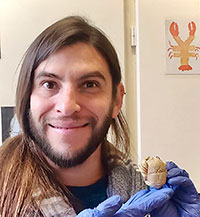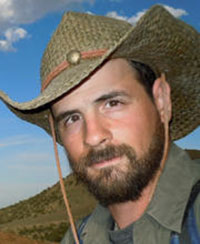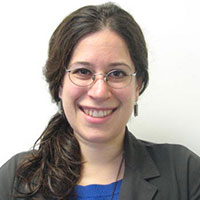 Javier Luque. Department of Zoology, Museum of Zoology, University of Cambridge, Downing Street, Cambridge CB2 3EJ, UK; Museum of Comparative Zoology and Department of Organismic and Evolutionary Biology, Harvard University, Cambridge, MA 02138, USA; Institute of Environment, Department of Biological Sciences, Florida International University-Biscayne Bay Campus, North Miami, FL 33181, USA; and Smithsonian Tropical Research Institute, Balboa–Ancón 0843–03092, Panamá, Panamá. Corresponding author. jl2351@cam.ac.uk.
Javier Luque. Department of Zoology, Museum of Zoology, University of Cambridge, Downing Street, Cambridge CB2 3EJ, UK; Museum of Comparative Zoology and Department of Organismic and Evolutionary Biology, Harvard University, Cambridge, MA 02138, USA; Institute of Environment, Department of Biological Sciences, Florida International University-Biscayne Bay Campus, North Miami, FL 33181, USA; and Smithsonian Tropical Research Institute, Balboa–Ancón 0843–03092, Panamá, Panamá. Corresponding author. jl2351@cam.ac.uk.
Dr. Luque’s research program seeks to elucidate how novel forms and functions originate and change through time, integrating biological, geological, and paleontological information. Dr. Luque’s research interests include decapod systematics, the morphology and evolution of compound eyes and visual systems in decapod crustaceans, taphonomy and exceptional preservation of fossil invertebrates in tropical settings, and the biostratigraphy of Neotropical marine invertebrates.
![]()
 Heather D. Bracken-Grissom. Institute of Environment, Department of Biological Sciences, Florida International University-Biscayne Bay Campus, North Miami, FL 33181, USA and Department of Invertebrate Zoology, National Museum of Natural History, Smithsonian Institution, 10th and Constitution Ave NW, Washington, DC 20560, USA. hbracken@fiu.edu
Heather D. Bracken-Grissom. Institute of Environment, Department of Biological Sciences, Florida International University-Biscayne Bay Campus, North Miami, FL 33181, USA and Department of Invertebrate Zoology, National Museum of Natural History, Smithsonian Institution, 10th and Constitution Ave NW, Washington, DC 20560, USA. hbracken@fiu.edu
Dr. Bracken-Grissom’s research program focuses in the evolution of marine invertebrates with an emphasis in decapod crustaceans, combining molecular, morphological and fossil evidence to gain insights into evolutionary relationships (phylogeny/phylogenomics), biogeography, biodiversity, ecology, origins and diversification of crabs, lobsters and shrimp. Dr. Bracken-Grissom’s research also includes the development and application of novel methods for DNA sequencing using next-generation technology, and exploring visual systems and structures involved in marine bioluminescence using deep-sea shrimp as model organisms.
![]()
 Javier Ortega-Hernández. Museum of Comparative Zoology and Department of Organismic and Evolutionary Biology, Harvard University, Cambridge, MA 02138, USA. jortegahernandez@fas.harvard.edu
Javier Ortega-Hernández. Museum of Comparative Zoology and Department of Organismic and Evolutionary Biology, Harvard University, Cambridge, MA 02138, USA. jortegahernandez@fas.harvard.edu
Dr. Ortega-Hernández’s research program focuses on the palaeobiology and evolution of some of the earliest known animals, particularly those that inhabited the Earth during the event known as the “Cambrian Explosion” approximately 530 million years ago. His main expertise encompasses the classification, morphology and phylogeny of arthropods and their close relatives, as their staggering abundance and ecological success make them excellent study subjects for understanding the rise of complex animal life.
![]()
 Joanna M. Wolfe. Museum of Comparative Zoology and Department of Organismic and Evolutionary Biology, Harvard University, Cambridge, MA 02138, USA. jowolfe@g.harvard.edu
Joanna M. Wolfe. Museum of Comparative Zoology and Department of Organismic and Evolutionary Biology, Harvard University, Cambridge, MA 02138, USA. jowolfe@g.harvard.edu
Dr. Wolfe’s research program concerns the macroevolution of processes shaping the tree of life, using pancrustaceans as a model clade with incredible phenotypic disparity. As an emblem of the Cambrian Explosion, this clade has been central to several decades of debate about the shape of past and present diversity, rates of evolution, and whether life can be predicted.

